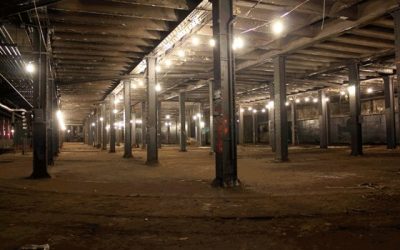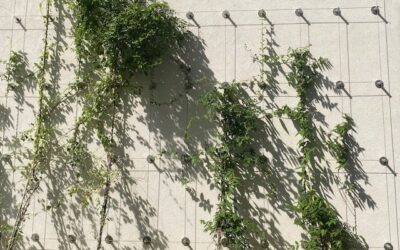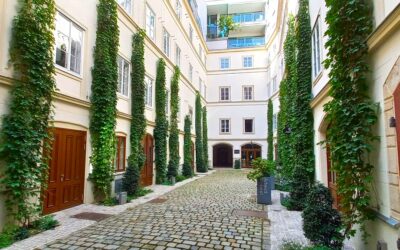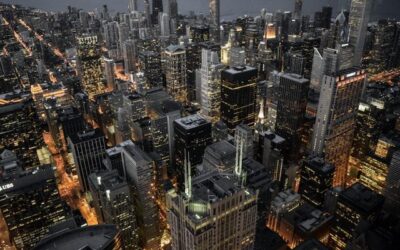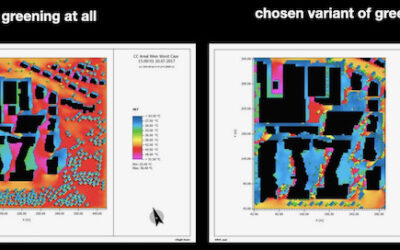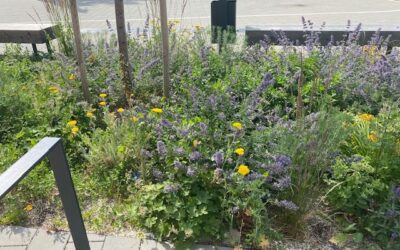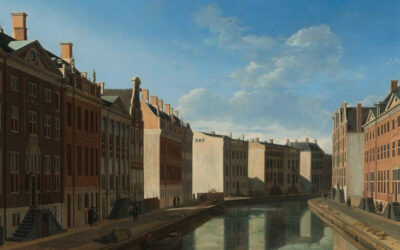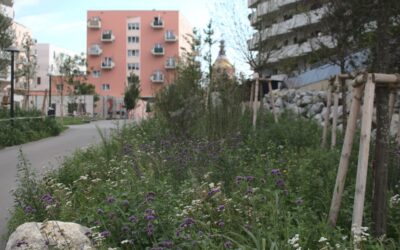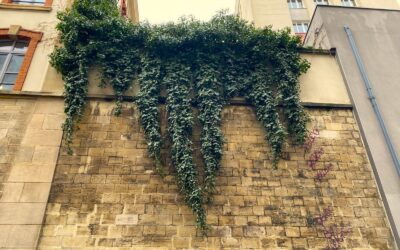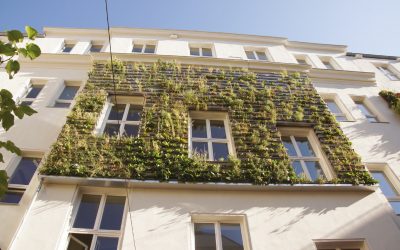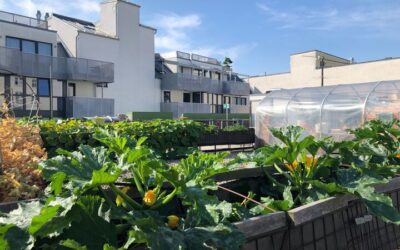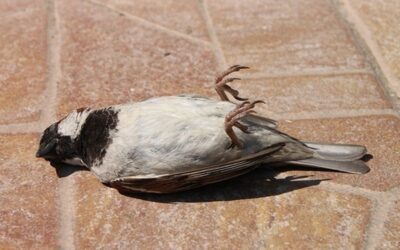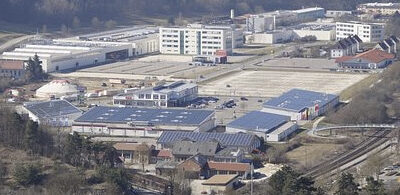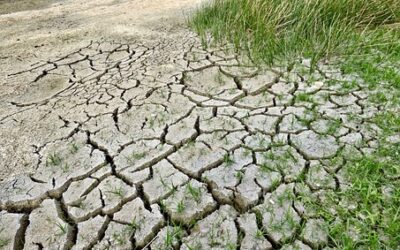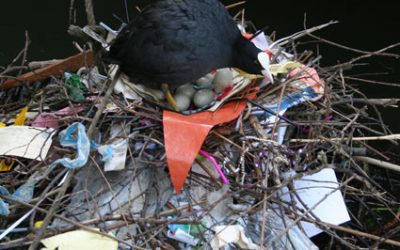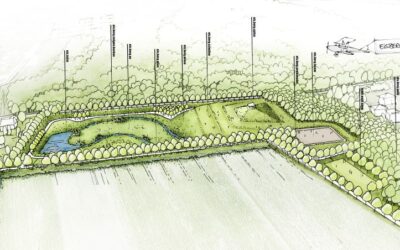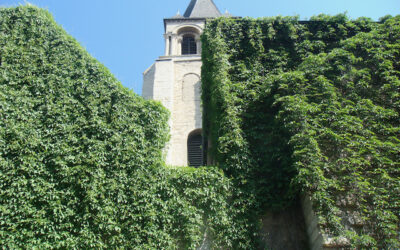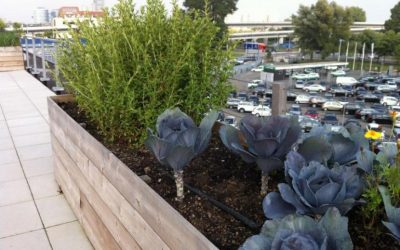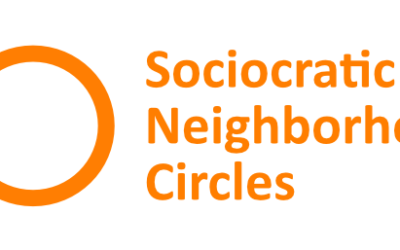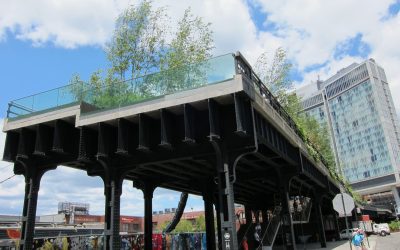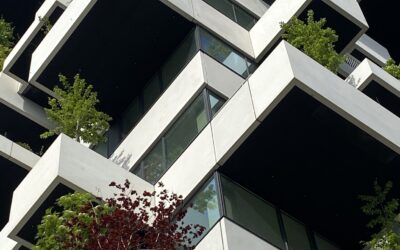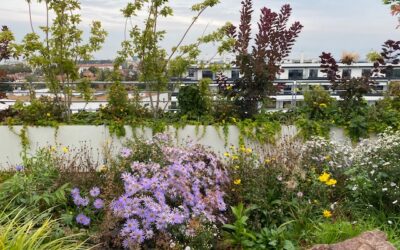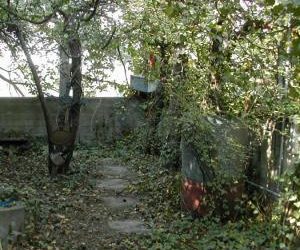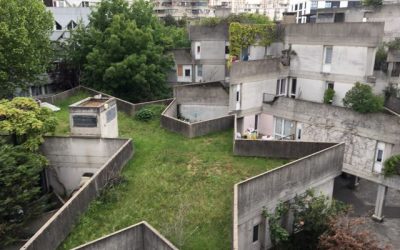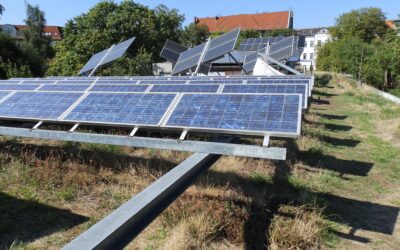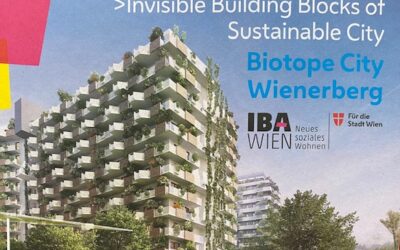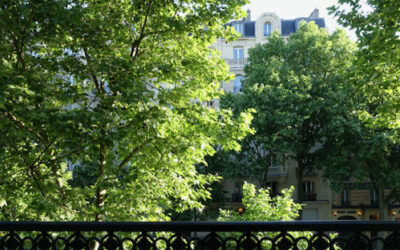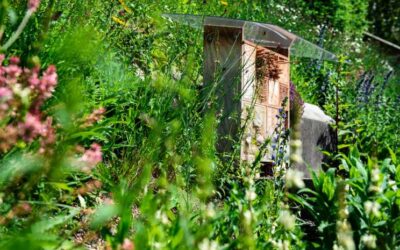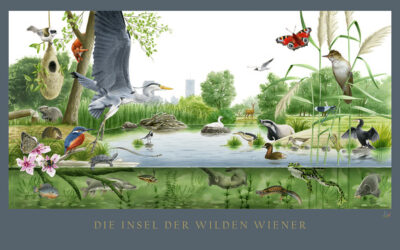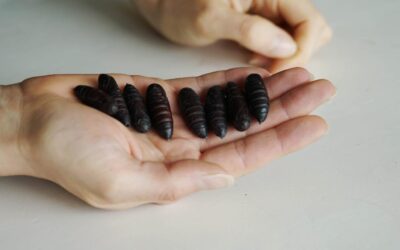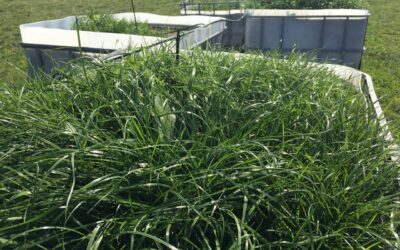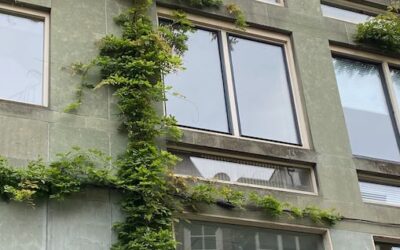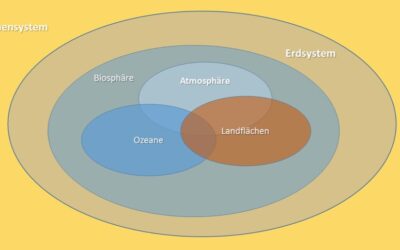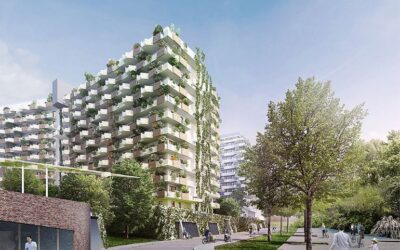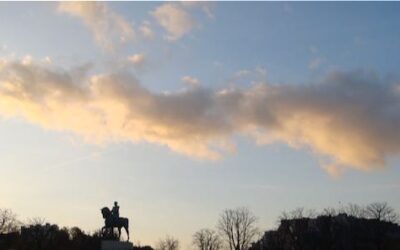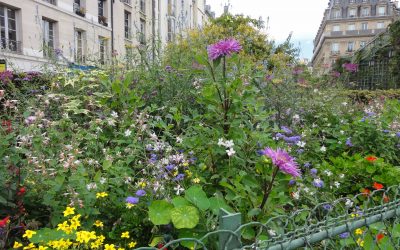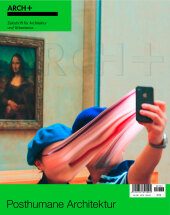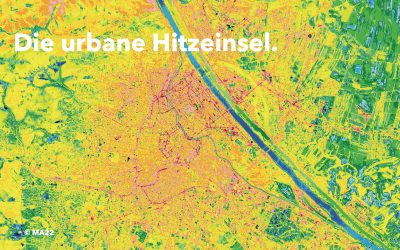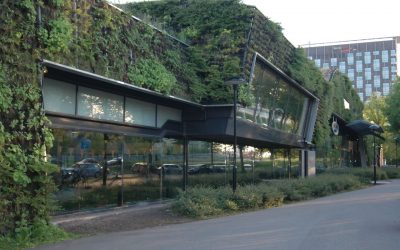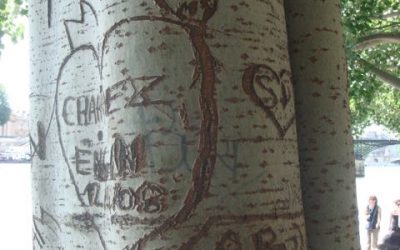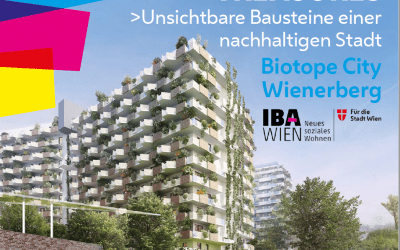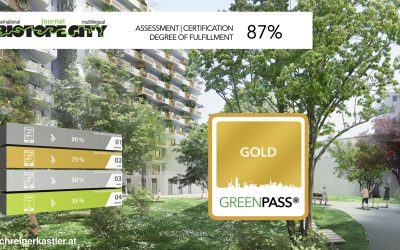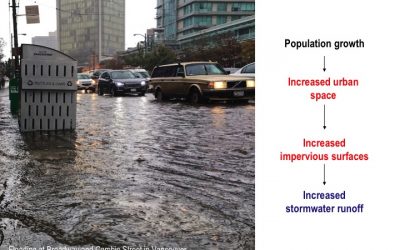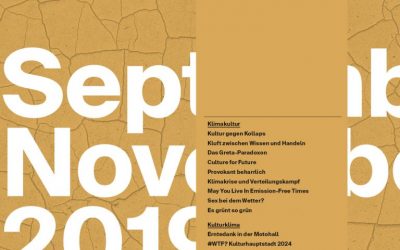architecture & urban development
THE LOWLINE AIMS HIGH
Click on images to enlarge them. They will appear in a new tab. After years of planning, another ambitious project rivaling the Highline in all its aspects, both good and bad – is being realized in New York City. It is called the Lowline and is located in Manhattan’s...
Building Greening and Fire Protection
An important topic! The City of Vienna recently introduced new subsidy regulations for the greening and unsealing of buildings - they are exemplary and will certainly lead to a surge in greening, especially in private buildings. And hopefully also provide an impetus...
More Money – More Green: Vienna’s New Funding Guidelines
Lecture by Jürgen Preiss, City of Vienna Now on the YouTube Chanal of BIOTOPE CITY JOURNAL https://www.youtube.com/watch?v=Y26cEdhyFcc&t=292s The Vienna City Council recently passed new subsidy guidelines for greening and unsealing buildings, which make it easier...
The production of the future: urban planning in civil society
This text was published in 1997 in the anthology ‘Zivile Gesellschaft’ (Civil Society) edited by Schmals/Heinelt. 25 years later, it is amazing how accurately the necessity of the urban development strategies outlined for solving urban problems were described back then – and at the same time it is shocking how little of the outlined solution strategies, having lost none of their validity, have penetrated into the reality of society and its planning. Yet such a form of planning would be more necessary than ever in order to put a stop to the problems of nature destruction with its biodiversity and climate change on the one hand and the increasing lack of natural resources and space on the other. It is worth reading!
Differentiated Cost-Benefit Analysis of the Effects of Urban Greenery
Which of the green-blue infrastructures, green roofs or façades, or perhaps trees, are the most effective means of climate adaptation, especially against the increasing overheating of our cities? Given the costs involved, which solution is the best choice?
On a Necessary Paradigm Shift From the CO2 Narrative to Water, Vegetation and Soil
Tuesday, May 28, 2024, 17.00 hrs - Webinar with Dr. Marco Schmidt, TU Berlin Climate change, rapid global urbanization, agricultural monocultures, the dramatic decline in biodiversity - these are all complex, mutually dependent processes. Dr. Marco Schmidt says: "The...
Regarder vers l’avenir – tirer les leçons du passé
Amsterdam 1671-1672 La 'baie d'or' du Herengracht. Peinture de Gerrit Adriaensz. Berckheyde, Gemeente Museum Amsterdam Le développement d'Amsterdam au 17e siècle comme paradigme de l'urbanisme bleu-vert et un exemple réussi à Vienne aujourd'hui Rien ne semble plus...
Looking back to the future – learning from the past
Amsterdam 1671-1672 The 'Golden Bay' of the Herengracht. Painting by Gerrit Adriaensz. Berckheyde, Rijksmuseum Amsterdam On the development of Amsterdam in the 17th century as a paradigm of blue-green urban planning and on a successful example in today's Vienna...
Towards an URBAN FUTURE: BIOTOPE CITY
Building the city of the future – a common saying. But what is really happening? Do we realise what the requirements of the future will be? Cities and city districts have to be built with a time horizon of centuries. We have to build the city of the future TODAY. But what does the future look like that we have to build for? What are its demands?
Vers l’AVENIR URBAIN: BIOTOPE CITY
La biodiversité menacée et l’expansion croisante des villem- quoi faire? Considérer la ville elle-même comme une forme de nature et donner de l’espace à la nature sous ses diverses formes dans l’environnement construit. C’est ‘voir la ville comme un biotope’, Biotope City. Conclure un contrat social avec la nature !
The Invasion of Nature into the City
Integrating biodiverse nature into urban areas: What is possible? What is desirable? How does one do it? Does it even make sense? Rules of the game for citizens and professionals in planning, design and maintenance. Prof.Dr. Helga Fassbinder, Foundation Biotope City...
Fire protection with facade greening
Dr. Dieter Werner, Testing, Inspection and Certification Body of the City of Vienna, Head of the Building Physics Laboratory Is facade greening a fire hazard? The City of Vienna has been investigating the fire behavior of facade greening since 2015. In the meantime,...
Rooftop Community Gardens – an extraordinary case at Vienna
Webinar by Margarete Eller The "Gartenwerkstatt" is Europe's largest community rooftop garden. It is located on the roof of a municipal high-rise garage and has about 50 members who have organized themselves as an association. It is a project worth emulating for...
Birds crashing into buildings: The invisible death and how it can be prevented
Lecture by Bendedikt Heger, 13.6., 17 h Every year, hundreds of thousands of birds die in collisions with glass panes in Austria alone. B.Sc, M.sc. Benedikt Heger from the Vienna Environmental Advocacy's Office explains why this is so, where the danger is particularly...
Urban industrial areas as ecological potential
by dr. ir. Robbert Snep, Wageningen University & Research, Netherlands On the youtube canal of BIOTOPE CITY JOURNAL : https://www.youtube.com/@biotopecityjournal8524 At a rapid pace, we are still sealing huge areas of land every day - in Austria, this amounted to...
Current findings of the Intergovernmental Panel on Climate Change
Lecture by Dr. Guido Halbig, IPCC and Deutscher Wetterdienst It gets hotter and drier in the cities - often in summer hardly bearable. At the same time, localized, extreme precipitation is increasing. Do we definitely have to prepare ourselves for this fact? As the...
Wildlife in The City
The green toad, the field hamster and the alpine bat, many species live next to us in the city. One man's joy, another man's sorrow? How and why is a rich nature in the city so important on a small and large scale? What opportunities are there for people to...
Greening the city – the utopian reality ?
Interview with Helga Fassbinder, emeritus professor at University of Technology and University of Technology Hamburg about the concept of Biotope City and its realization in Vienna, Austria
Green infrastructure as an integrative constituent and prerequisite of urban development
Is there a way to design and implement a customised green infrastructure for new settlement expansions? This article shows how a multifunctional and interdisciplinary planning approach can be used to develop a new settlement area in the city of St.Pölten called “Eisberg” despite climate change.
Greening Facades – A Historical Introduction
Greening buildings has a long tradition and has been practiced for thousands of years: it has many advantages – not only aesthetically, but also in terms of its effects on the environment and health. Recently, it has experienced a revival due to climate change.
CLIMATE CHANGE and GENDER
The lecture is now online on our youtube channel ! https://www.youtube.com/watch?v=QxCE5njoksg The effects of climate change are not felt equally by everyone. Women, and particularly women from the Global South, are disproportionately affected by climate change and...
Sociocratic Neighbourhood Circles SoNeC
SoNeC is a 26 month-long Erasmus+ project including Biotope City. It is funded by the EU’s “KA2 Strategic Partnerships for adult education” program and addresses serious social and environmental issues by applying neighborhood-based, bottom-up, participatory and inclusive decision making processes.
New lecture series on urgent issues of the dense city as nature.
Climate change and the energy transition have made many questions of the dense city as nature urgently explosive. What are the solutions? How do we broadly implement already existing solution? How do we reach investors, citizens, politicians? A new series of...
First forest tower in social housing – planted in the Netherlands
Largely unnoticed by the experts, a special feature in the field of housing stands in Eindhoven, the Netherlands, a city of about 250,000 inhabitants: a Dutch 'Bosco vertical' - but not for rich residents, like the world-famous building in Milan, but a Bosco vertical...
The example of Biotope City Wienerberg: The green city at the crossroad of disciplines, investors and authorities
Contribution to the Conference of the Deutscher Werkbund Berlin on 'New Social Housing', May 2022 As architects and urban planners we design and build products that should still fulfil their function for at least 100 years. Of course, we cannot give an idea of the...
Growing Green Cities Conference: long term thinking in a short termin world
How to think long term in a short term world, for growing green cities?We seldom take time to discuss this question, but in this conference we do! You can register at: https://lnkd.in/eKs3gThU With speakers like Minister de Jonge, Derk Loorbach, Barbara...
The Relationship between City and Nature in History
by Inken Baller. Greening architecture and urban development is part of the long tradition of making cities livable and healthy. A look into history up to the recent past.
Photovoltaic Plantscapes
It is a generally accepted requirement that green buildings combined with photovoltaic (PV) energy generation should be increasingly used in cities. However, photovoltaics, the necessary substructure and greening structure must be carefully coordinated. The aim of...
The Hidden Treasures of the Biotope City Wienerberg at Vienna
The Biotope City neighborhood in Vienna is attracting a lot of attention, visits and tours are the order of the day. But most of the sustainable and climate-efficient features are not easily or not at all visible. They are 'hidden treasures'. In order to track them...
Symposium ‘The climate-resilient, green, nature-inclusive city’ – all contributions online !
The 10 most important elements that make up a climate-resilient, green, nature-inclusive city: State of the art. This year saw the completion of Biotope City Wienerberg, a climate-resilient, green, nature-inclusive neighbourhood. The project received the international...
What does biodiversity cost the taxpayer?
Unaffordable, especially now in view of the pandemic’s national debt? Christoph Küffer calculates the costs against the profits using Switzerland as an example.
THE ISLAND OF THE WILD VIENNESE
An uninhabited island in the middle of the big city, where deer and beavers live, where grey herons and cormorants find rich fishing grounds, where marsupial tits build their elaborate nests? A romantic dream? Inner-city nature reserves or fallow land are under high...
Sferen / Atmospheres – Sculpture exhibition
Night-birds, riverbeds, Japanese knotweed and the source of the Mississippi… With their work, the six artists of Sferen make the viewer aware of his relationship with the natural and urban environment.
Urban Mining Technical Soils for Biotope Cities
Pia Minixhofer, Bernhard Scharf, Sebastian Hafner, Thomas Romm Growing cities In the coming years, more and more people will live and work in cities (UN 2018). The accompanying need for more housing and infrastructure is causing construction activity to increase....
Manifesto “BUILDING FOR NATURE” by environmental organisations and the largest construction companies in the Netherlands
"Nature measures must become an obligatory part of housing construction, according to the postulate of nature and environmental organisations and the largest construction companies in the Netherlands. They want nature to become a "natural component" of all new...
10 Theses on the sustainable, climate-friendly City of the Future
Climate change is on everyone's lips. At first glance, today's climate change, beginning with industrialisation in the 19th century, is a local / regional / Earth-wide increase in temperature and weather extremes. But more and more people feel that serious changes are...
The Biotope City Quartier Wienerberg – what is so special with it?
Biotope City Wienerberg is a neighbourhood that has broken new ground in many areas. In this it is part of the great tradition of Viennese housing construction, which for 100 years has repeatedly gone far beyond what was common practice in housing construction at the...
SPACE – TIME
Presentation Colette van Landuyt - second participant in QuoVadis? 2222 Summary: The break between space and time in Western culture resulted in a radical break with nature. Nature is not sensitive to ideologies; it does for its effects. GAIA rebels through...
A recyclable space-time ratio
This essay by Gilles Clement, the famous french paysagist is written 10 years ago – today his urgency is increased only! Recommanded by the editors.
50 years ARCH+
by Helga Fassbinder. Formerly a critical magazin.What function does it fulfil today? Are the major challenges of the future – climate change, loss of biodiversity, scarcity of resources – reflected in terms of construction and planning?
Housing in a climate emergency
An affordable, climate-efficient measure, which could be implemented immediately. By Helga Fassbinder
Michael Sorkin 1948-2020
On March 26, 2020, architect and publicist Michael Sorkin died after being infected with the corona virus. Sorkin was a warm advocate of “green urbanism”.
Mercator Swimming pool Amsterdam
10 Years ago: By protest of the neighbourhood the swimming pool in a inner city park of Amsterdam could only been built completely covered by green. Architect VenhoevenCS, green architekt Patrick Blanc
Biotope City – The dense City as Nature
What does this mean? Is this a real option? Helga Fassbinder shows yes, and there will beno escape from this concept…
Biotope City Symposium Eindhoven
Organized by Foundation Biotope City, Architectuurcentrum Eindhoven, Eindhoven University of Technology and Eindhoven municipality.
The Symposium, originally planned May 15, 2020, will take place later this year at Eindhoven. We hope to be able to announce the new date soon !
Invisible Treasures of a Biotope City
The Biotope City Wienerberg contains many qualities that will not be immediately visible after completion at the end of 2020. Now IBA Vienna has published the broschure “Hidden Treasures”, which describes the hidden treasures of this forward-looking green district.
IT-gesteuerte Planung von Natur in der dichten Stadt
Können die Effekte von Grünbewuchs in der dichten Stadt exakt bereits im Planungsstadium prognostiziert werden? Ja! Bernhard Scharf stellt die Greenpass-Methode vor, die bereits erfolgreich praktisch angewandt wird.
REGE
Wie mache ich Bürgern klar, wie wichtig die verschiedenen Möglichkeiten von Regenwasser-Rückhaltung durch Begrünen sind? Prof. Daniel Roer, University of British Columbia,Vancouver, stellt eine Methode vor.
THE HIGH LINE NEW YORK – ONCE AN OASIS, NOW A THEME PARK
Click on images to enlarge "...The High Line was originally constructed in the 1930s, to lift dangerous freight trains off Manhattan's streets... Friends of the High Line (founded by Joshua David and Robert Hammond, residents of the High Line neighborhood,...
KRISE FINDET STADT
Die KUPFzeitung ist das kulturpolitische Magazin der Kulturplattform OÖ. Sie ist ein zentrales Medium des Kulturdiskurses in Oberösterreich.

